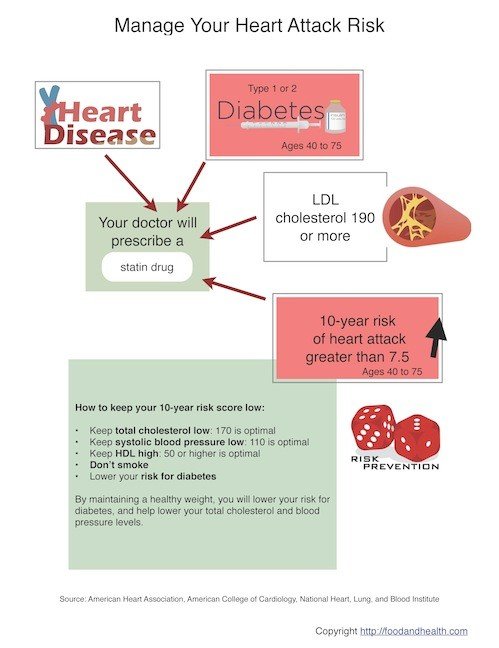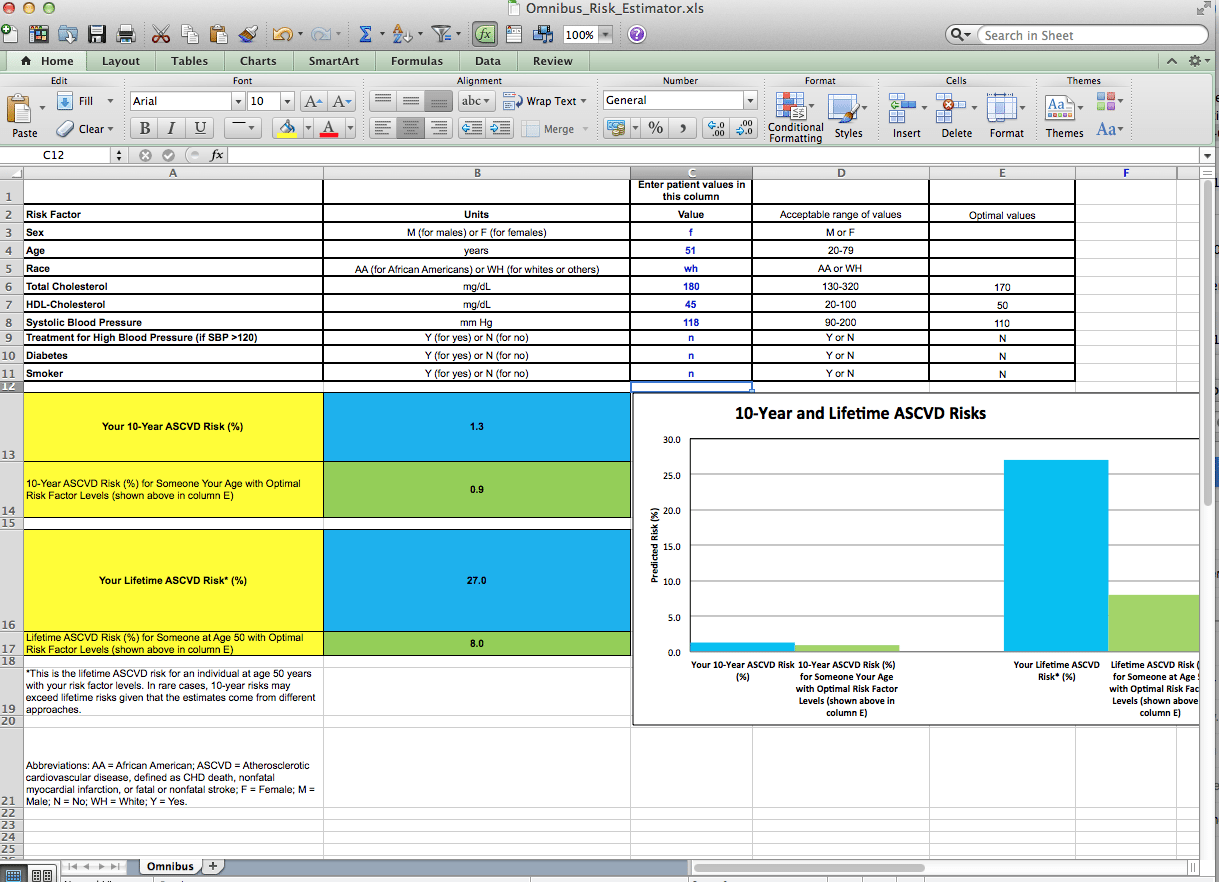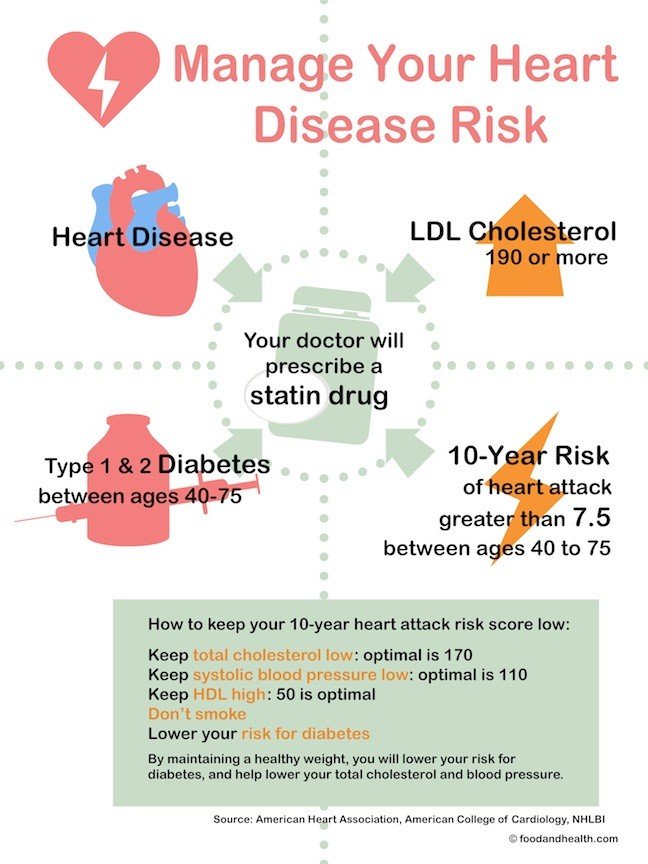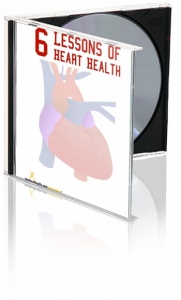New Cardiovascular Disease Prevention Guidelines
Want a free handout about the new cardiovascular disease prevention guidelines? Watch for it at the bottom of this post!Hot on the heels of the Food and Drug Administration's (FDA) press release regarding partially hydrogenated oils and their possible removal from the list of foods that are generally recognized as safe, the National Heart, Lung, and Blood Institute (NHLBI) has issued a press release of its own. This one is all about a new model for cardiovascular disease prevention. You can read the full press release here or check out the key points below...
"...four of the five Expert Panels/Working Groups embraced the collaborative model and worked successfully with the American Heart Association (AHA), the American College of Cardiology (ACC) and other professional societies to develop new cardiovascular disease (CVD) clinical practice guidelines for lifestyle, risk assessment, cholesterol, and obesity."
We see this as good news for registered dietitians and many other health professionals because prevention is a critical key to help patients reduce their risk of heart disease and other chronic illnesses.New Heart Health Guideline OverviewThese new guidelines, led by the AHA and ACC and endorsed by other professional societies, provide a valuable updated roadmap to help clinicians and patients manage prevention and treatment challenges. The significant points include...
- Lifestyle: Recommendations include reducing saturated fat, trans fat, and sodium intakes below the levels that most people employ. They also include engaging in physical activity -- an average of 40 minutes of moderate to vigorous-intensity aerobic exercise -- 3-4 times a week. Look familiar? This exercise recommendation is very similar as the one set forward by the Physical Activity Guidelines for Americans. It equates to roughly 2 to 2 and 1/2 hours per week.
- Risk Assessment: The guideline has been broadened to include assessment for risk of stroke as well as heart attack. It also provides new gender- and race-specific formulas for predicting risk.
- The new guideline recommends moderate- or high-intensity statin therapy for the following four groups:• Patients who have cardiovascular disease• Patients with an LDL (a.k.a. “bad”) cholesterol level of 190 mg/dL or higher• Patients with type 2 diabetes who are between 40 and 79 years of age• Patients with an estimated 10-year risk of cardiovascular disease of 7.5 percent or higher who are between 40 and 79 years of age (the report provides formulas for calculating 10-year risk using a downloadable excel spreadsheet for the calculator -- there's a sample featured below).
- Cholesterol: The guidelines identify four major groups of patients for whom cholesterol-lowering HMG-CoA reductase inhibitors, or statins, have the greatest chance of preventing stroke and heart attacks. There's more detail in the info graphic below.
- Overweight & Obesity: The report summarizes knowledge about various diets for weight loss, the efficacy and effectiveness of comprehensive lifestyle interventions on weight loss and weight loss maintenance, and the benefits and risks of bariatric surgery.
From the American College of Cardiology's press release:“The likely impact of the recommendations is that more people who would benefit from statins are going to be on them, while fewer people who wouldn’t benefit from statins are going to be on them,” Dr. Stone said. Doctors may also consider switching some patients to a higher dose of statins to derive greater benefit as a result of the new guidelines.A Closer Look at the Tools of the TradeGet your copy of the the handy risk assessment infographic today! Let's take a closer look at the risk assessment calculator. If you'd like to download your very own copy, just keep scrolling. The link is below...
Let's take a closer look at the risk assessment calculator. If you'd like to download your very own copy, just keep scrolling. The link is below... Links:
Links:
- Risk Calculator - AHA
- Risk Calculator - ACC
- NHLBI Press Release
- 2013 Assessment of Risk Guideline from AHA, ACC
- 2013 Guide to Treatment
- American College of Cardiology Press Release
This news is huge, especially for dietitians and health educators! Our team of dietitians is hard at work crafting additional resources and even a guide to understanding and implementing the lessons in these new guidelines. Watch this space -- that article will be out later this week.A new heart health poster is ready now -- check it out today! An accompanying PowerPoint show and brochure for this new model are coming soon. In the meantime, feast your eyes on this poster... There's also a fantastic new heart health program that you can read through today! It's called the 6 Lessons of Heart Health and covers cholesterol, blood pressure, the Dietary Approaches to Stop Hypertension (DASH), weight management for heart health, cooking tricks and recipes that promote heart health, and a guide to dining out in a balanced way. Check it out today!
There's also a fantastic new heart health program that you can read through today! It's called the 6 Lessons of Heart Health and covers cholesterol, blood pressure, the Dietary Approaches to Stop Hypertension (DASH), weight management for heart health, cooking tricks and recipes that promote heart health, and a guide to dining out in a balanced way. Check it out today! Looking for more? Get the lowdown on all of the cholesterol and blood pressure materials you could ever need. There's also a downloadable PDF of the heart risk infographic available at the top of the main store page.
Looking for more? Get the lowdown on all of the cholesterol and blood pressure materials you could ever need. There's also a downloadable PDF of the heart risk infographic available at the top of the main store page.
